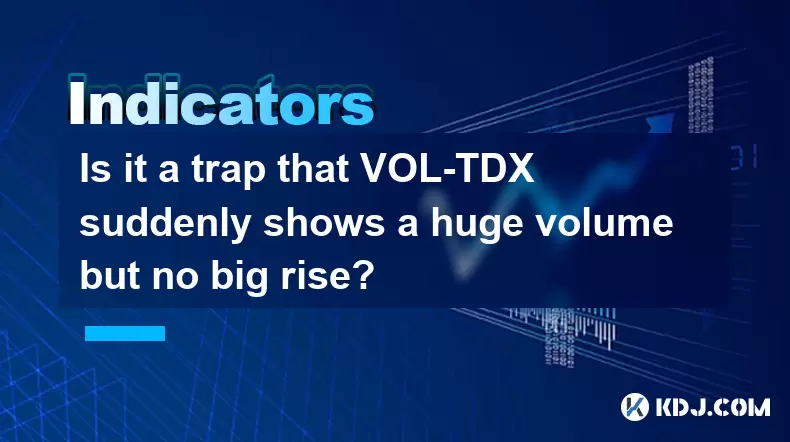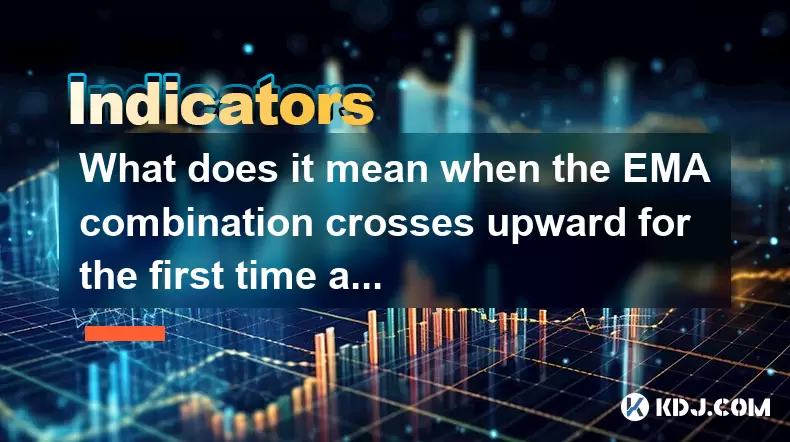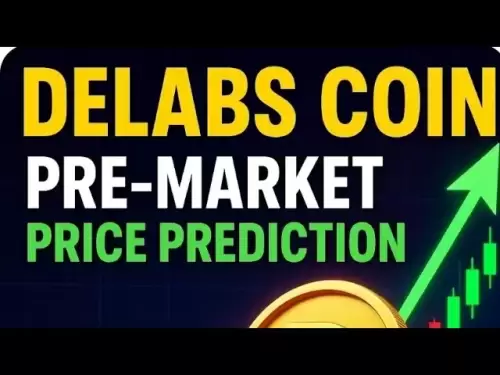-
 Bitcoin
Bitcoin $118600
0.36% -
 Ethereum
Ethereum $3855
1.06% -
 XRP
XRP $3.195
-0.09% -
 Tether USDt
Tether USDt $1.000
-0.04% -
 BNB
BNB $844.5
6.23% -
 Solana
Solana $191.3
2.83% -
 USDC
USDC $0.9997
-0.01% -
 Dogecoin
Dogecoin $0.2376
0.10% -
 TRON
TRON $0.3242
0.83% -
 Cardano
Cardano $0.8222
0.13% -
 Hyperliquid
Hyperliquid $45.26
6.53% -
 Sui
Sui $4.200
-2.56% -
 Stellar
Stellar $0.4336
-1.24% -
 Chainlink
Chainlink $18.86
0.28% -
 Hedera
Hedera $0.2796
-1.75% -
 Bitcoin Cash
Bitcoin Cash $583.3
-1.84% -
 Avalanche
Avalanche $27.06
8.09% -
 Litecoin
Litecoin $112.3
-1.16% -
 Toncoin
Toncoin $3.353
0.58% -
 UNUS SED LEO
UNUS SED LEO $8.968
-0.11% -
 Shiba Inu
Shiba Inu $0.00001395
-0.54% -
 Ethena USDe
Ethena USDe $1.001
-0.03% -
 Uniswap
Uniswap $10.76
0.69% -
 Polkadot
Polkadot $4.175
0.26% -
 Monero
Monero $326.7
1.07% -
 Bitget Token
Bitget Token $4.665
1.61% -
 Dai
Dai $0.9998
-0.02% -
 Pepe
Pepe $0.00001271
0.32% -
 Cronos
Cronos $0.1416
2.01% -
 Aave
Aave $299.3
1.15%
Is it a trap that VOL-TDX suddenly shows a huge volume but no big rise?
A sudden VOL-TDX volume spike without price movement may signal manipulation, liquidity absorption, or distribution—verify with order book, OBV, and RSI before acting.
Jul 28, 2025 at 04:49 am

Understanding VOL-TDX and Its Role in Cryptocurrency Analysis
VOL-TDX is a technical indicator commonly used in cryptocurrency trading platforms to measure volume dynamics in relation to price movements. It combines volume data with price trends to help traders identify potential breakouts, reversals, or accumulation phases. When traders observe a sudden spike in VOL-TDX volume, it typically suggests increased market participation. However, the absence of a corresponding price surge raises questions about the authenticity of the move. This phenomenon could indicate several underlying scenarios, including market manipulation, liquidity absorption, or distribution by large holders.
The key to interpreting this signal lies in understanding how volume and price should traditionally align. In healthy uptrends, rising prices are supported by increasing volume. A divergence—where volume spikes but price remains flat or only slightly increases—can signal weakness. This mismatch may suggest that buying pressure is being absorbed by sellers at higher levels, preventing upward momentum. Traders should pay close attention to order book depth and time-and-sales data to confirm whether the volume is genuine or artificially induced.
Identifying Potential Market Manipulation Tactics
One plausible explanation for high volume without a price increase is wash trading or spoofing. Wash trading involves a trader simultaneously buying and selling the same asset to create the illusion of activity. This tactic inflates volume metrics like VOL-TDX without affecting real price discovery. Spoofing, on the other hand, occurs when large limit orders are placed and then canceled before execution, tricking other traders into reacting to false demand or supply.
To detect such manipulation:
- Monitor order book imbalances for sudden appearance and disappearance of large orders.
- Use timeframe correlation—check if the volume spike appears on multiple exchanges or only one.
- Analyze trade size distribution—a high number of small trades during the spike may indicate bot-driven activity.
- Cross-verify with on-chain data if available—large wallet movements may confirm or refute the legitimacy of the volume.
These steps help differentiate between organic market activity and artificial inflation designed to lure retail traders into unfavorable positions.
Examining Liquidity Absorption and Distribution Phases
Another interpretation of the volume-price disconnect is liquidity absorption. During this phase, large institutional players or whales accumulate positions by placing massive sell walls at incremental price levels. As retail buyers push the price upward, these hidden sell orders absorb the incoming buy volume, preventing a breakout. The result is a volume spike on the VOL-TDX chart with minimal price movement.
This scenario often unfolds in the following manner:
- A sudden surge in buying interest triggers a volume spike.
- Hidden sell orders at key resistance levels are executed gradually.
- Price oscillates within a narrow range despite high volume.
- Order book shows thick sell walls that do not diminish quickly.
Alternatively, the market may be in a distribution phase, where large holders are offloading their positions to retail investors. In this case, the high volume reflects selling pressure masked by apparent buying activity. Candlestick patterns such as long upper wicks or bearish engulfing near resistance zones can support this hypothesis.
How to Analyze VOL-TDX in Conjunction with Other Indicators
Relying solely on VOL-TDX can lead to misinterpretation. Combining it with complementary tools enhances accuracy. For instance, integrating Volume Profile helps identify price levels with the highest trading activity. If the volume spike occurs at a level with low historical volume, it may lack sustainability.
Other useful indicators include:
- On-Balance Volume (OBV): Confirms whether volume is flowing into or out of the asset.
- Relative Strength Index (RSI): Detects overbought conditions that may precede reversals.
- Moving Averages: Price behavior relative to the 50-day or 200-day MA can indicate trend strength.
- Order Flow Analysis: Tools like footprint charts reveal bid-ask imbalances at micro levels.
When VOL-TDX spikes without price movement, check if OBV is declining—this would suggest distribution. If RSI is flat or falling, it reinforces the idea that momentum is not building despite volume. These cross-verified signals reduce the risk of falling into a trap.
Step-by-Step Guide to Responding to Suspicious Volume Spikes
When you observe a sudden VOL-TDX spike without a price rise, follow these steps to protect your position:
- Pause active buying and avoid entering new long positions immediately.
- Zoom into lower timeframes (e.g., 5-minute or 1-minute charts) to inspect the nature of the volume.
- Check exchange-specific data—some platforms may show inflated volume due to internal trading.
- Review recent news or announcements—sudden volume can stem from rumors, even if unfounded.
- Set tight stop-loss orders if already holding a position, especially near resistance zones.
- Wait for confirmation candles—a strong breakout with closing price above resistance and sustained volume validates a genuine move.
Executing these steps systematically minimizes exposure to false breakouts and engineered volatility.
Frequently Asked Questions
Can high VOL-TDX volume without price movement indicate a coming breakout?
Yes, it can—but only if followed by a confirmed price surge. The volume may represent accumulation, where smart money is building positions before a breakout. However, until price breaks a key resistance level with closing confirmation, it remains speculative.
How do I distinguish between real volume and fake volume on VOL-TDX?
Real volume is typically accompanied by sustained price movement and visible trades on the order book. Fake volume often lacks follow-through, appears on low-liquidity exchanges, and coincides with repetitive trading patterns. Using exchange volume APIs and comparing with CoinMarketCap or CoinGecko data helps verify authenticity.
Should I sell my holdings if I see this pattern?
Not automatically. Evaluate the broader context—check support levels, market sentiment, and macro indicators. If the asset is in a strong uptrend and the volume spike occurs near support, it might be a shakeout. Selling should be based on a predefined strategy, not isolated signals.
Does this pattern occur more frequently in low-cap cryptocurrencies?
Yes. Low-market-cap tokens are more susceptible to manipulation due to lower liquidity and fewer participants. High-volume spikes without price changes are more common in these assets, especially on smaller exchanges with weak oversight. Always prioritize trading pairs with high real volume and reputable exchange listings.
Disclaimer:info@kdj.com
The information provided is not trading advice. kdj.com does not assume any responsibility for any investments made based on the information provided in this article. Cryptocurrencies are highly volatile and it is highly recommended that you invest with caution after thorough research!
If you believe that the content used on this website infringes your copyright, please contact us immediately (info@kdj.com) and we will delete it promptly.
- Bitcoin, Fiat Devaluation, and Hedging: A New Yorker's Take
- 2025-07-28 22:50:12
- Trump Media, Bitcoin, and Options: A High-Stakes Gamble?
- 2025-07-28 23:10:13
- Elon Musk, SpaceX, and Bitcoin: A $153 Million Mystery
- 2025-07-28 22:30:12
- Pepe, Price Prediction, and Dogecoin: What's Next for Meme Coins?
- 2025-07-28 23:15:12
- Crypto, VCs, and Infrastructure: Building the Future, Not Just Betting on Memes
- 2025-07-28 22:50:12
- Ozak AI: Is This Crypto Gem Primed for a 2025 Takeoff?
- 2025-07-28 22:30:12
Related knowledge

What does it mean when the EMA combination crosses upward for the first time after sideways trading?
Jul 28,2025 at 03:43pm
Understanding the EMA and Its Role in Technical AnalysisThe Exponential Moving Average (EMA) is a widely used technical indicator in cryptocurrency tr...

What signal does the ROC send when it rises rapidly from a low level and breaks through the zero axis?
Jul 27,2025 at 10:15am
Understanding the Rate of Change (ROC) IndicatorThe Rate of Change (ROC) is a momentum-based oscillator used in technical analysis to measure the perc...

What does it mean when the price breaks through the double bottom neckline and the moving averages are arranged in a bullish pattern?
Jul 28,2025 at 10:57am
Understanding the Double Bottom PatternThe double bottom is a widely recognized reversal chart pattern in technical analysis, particularly within the ...

What signal does the DMA fast line cross the slow line above the zero axis?
Jul 28,2025 at 05:42am
Understanding the DMA Indicator and Its ComponentsThe DMA (Difference of Moving Averages) indicator is a technical analysis tool used in cryptocurrenc...

What does it mean that the rebound is blocked after the moving average is arranged in a short position for the first time?
Jul 26,2025 at 10:51am
Understanding the Short-Term Moving Average ConfigurationWhen traders refer to a 'short position arrangement' in moving averages, they are describing ...

What does it mean that the ZIGZAG low point is raised and the high point breaks through the previous peak?
Jul 28,2025 at 03:28am
Understanding the ZIGZAG Indicator in Cryptocurrency TradingThe ZIGZAG indicator is a technical analysis tool widely used in cryptocurrency trading to...

What does it mean when the EMA combination crosses upward for the first time after sideways trading?
Jul 28,2025 at 03:43pm
Understanding the EMA and Its Role in Technical AnalysisThe Exponential Moving Average (EMA) is a widely used technical indicator in cryptocurrency tr...

What signal does the ROC send when it rises rapidly from a low level and breaks through the zero axis?
Jul 27,2025 at 10:15am
Understanding the Rate of Change (ROC) IndicatorThe Rate of Change (ROC) is a momentum-based oscillator used in technical analysis to measure the perc...

What does it mean when the price breaks through the double bottom neckline and the moving averages are arranged in a bullish pattern?
Jul 28,2025 at 10:57am
Understanding the Double Bottom PatternThe double bottom is a widely recognized reversal chart pattern in technical analysis, particularly within the ...

What signal does the DMA fast line cross the slow line above the zero axis?
Jul 28,2025 at 05:42am
Understanding the DMA Indicator and Its ComponentsThe DMA (Difference of Moving Averages) indicator is a technical analysis tool used in cryptocurrenc...

What does it mean that the rebound is blocked after the moving average is arranged in a short position for the first time?
Jul 26,2025 at 10:51am
Understanding the Short-Term Moving Average ConfigurationWhen traders refer to a 'short position arrangement' in moving averages, they are describing ...

What does it mean that the ZIGZAG low point is raised and the high point breaks through the previous peak?
Jul 28,2025 at 03:28am
Understanding the ZIGZAG Indicator in Cryptocurrency TradingThe ZIGZAG indicator is a technical analysis tool widely used in cryptocurrency trading to...
See all articles

























































































